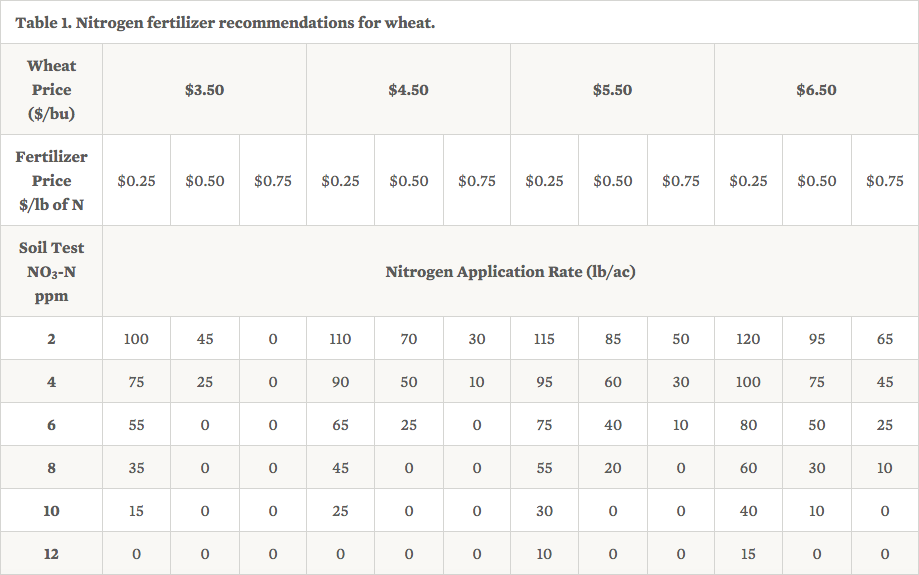By Gary Hergert, Tim Shaver, Charles Shapiro, Charles Wortmann, Richard Ferguson and Brian Krienke, UNL Extension Soils Specialists
Wheat harvest is complete and it's time to think about fall fertilization and next year's fertilizer needs. With adequate stored soil moisture in most of the winter wheat fallow areas in Nebraska, yield potential for next year's crop should be good.
In Nebraska when there is adequate moisture, profitable winter wheat production often requires nitrogen (N) and phosphorus (P) fertilization. Other nutrients may be needed for some fields, but most Nebraska soils supply adequate nutrients other than N and P.
Because of generally high precipitation amounts in 2015, nitrate movement deeper into the soil profile is a possibility. Therefore, soil sampling to at least a 3-foot depth is recommended to determine residual nitrate and adjust N recommendations. Nitrates should be sampled before each wheat crop. (See Guidelines for Soil Sampling, NebGuide G1740.)
Nitrogen
Soil test results, fertilizer prices and expected selling price for your wheat are used to calculate both N and P recommendations. (See Fertilizing Winter Wheat, UNL EC143.) As wheat and fertilizer prices can change, a good approach is to apply a small amount of N (20 pounds N per acre) this fall, either row-applied or broadcast N. Use soil test results and watch fertilizer and wheat prices over the fall and winter to determine how much additional N might be applied next spring before jointing. Based on a range of current prices for wheat and N (Table 1), it is still profitable to apply N.

Phosphorus
Applying phosphate is also still profitable. Nebraska data shows up to a 20-bushel-per-acre increase when applying P to low soil test levels, and up to a 10-bushel-per-acre increase when applying to medium P soils. The most profitable rate depends on the P source, wheat and fertilizer prices, soil pH, and the application method.
Row or dual-applied P is a more efficient application method than broadcast. Newer ammonia applicators with coulters allow narrower application (15 inches) and also operate at shallower depths (5-7 inches), greatly reducing power requirements. This has been a standard practice with older knife (dual) placement, which has been around for 20 years.
Dual-applied P and seed-applied P perform equally at optimum seeding dates (see recommended dates). Phosphorus recommendations in wheat depend on several factors. All information needed to determine P rates as well as example calculations are provided in Fertilizing Winter Wheat (UNL EC143).
Other Nutrients
Most Nebraska soils have adequate levels of all other nutrients (potassium, zinc, sulfur) to produce good dryland wheat yields. Your biggest return on a fertilizer investment will be from applying N and P.






Post a comment
Report Abusive Comment